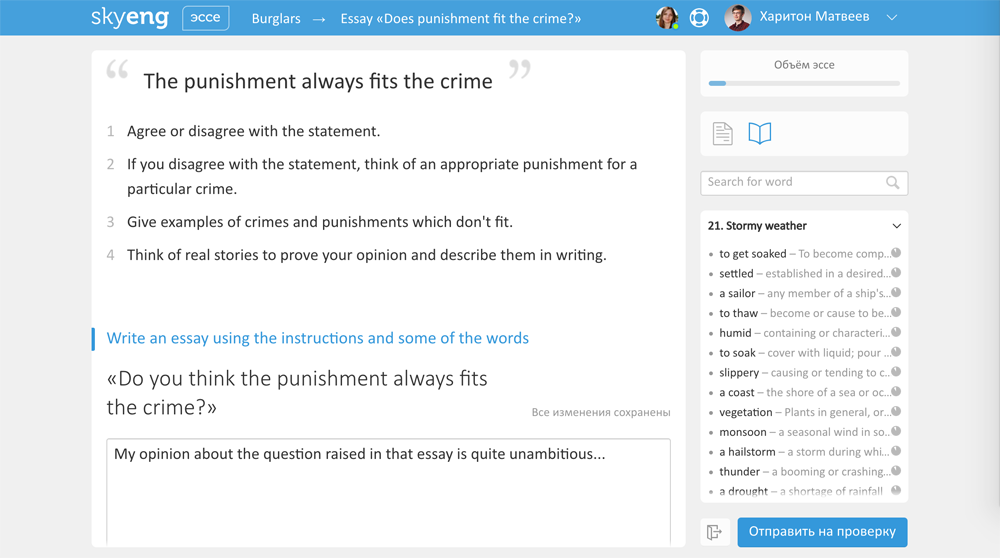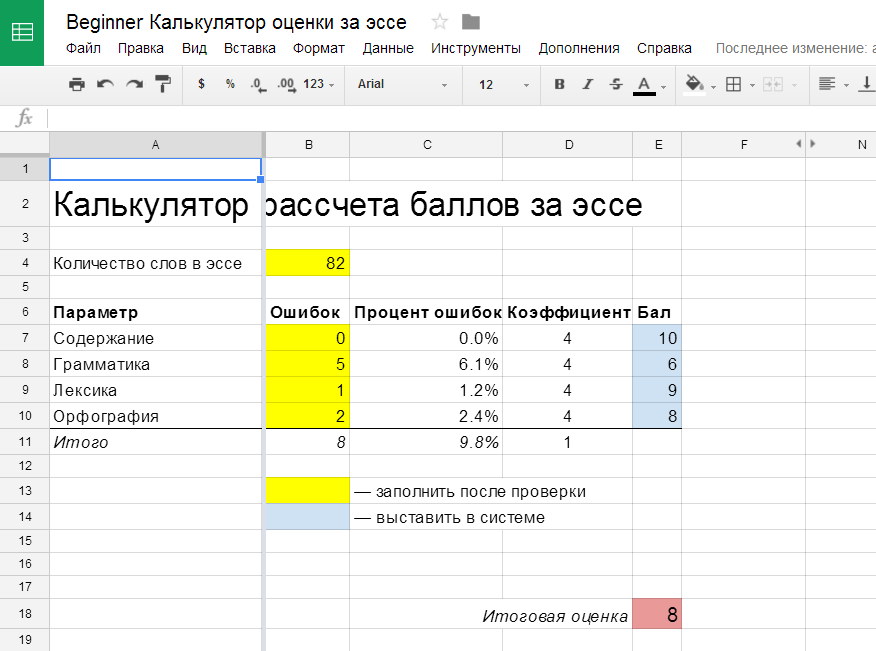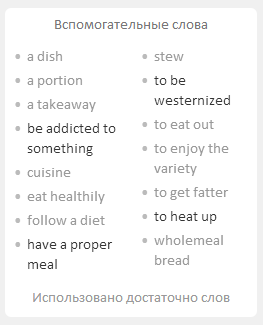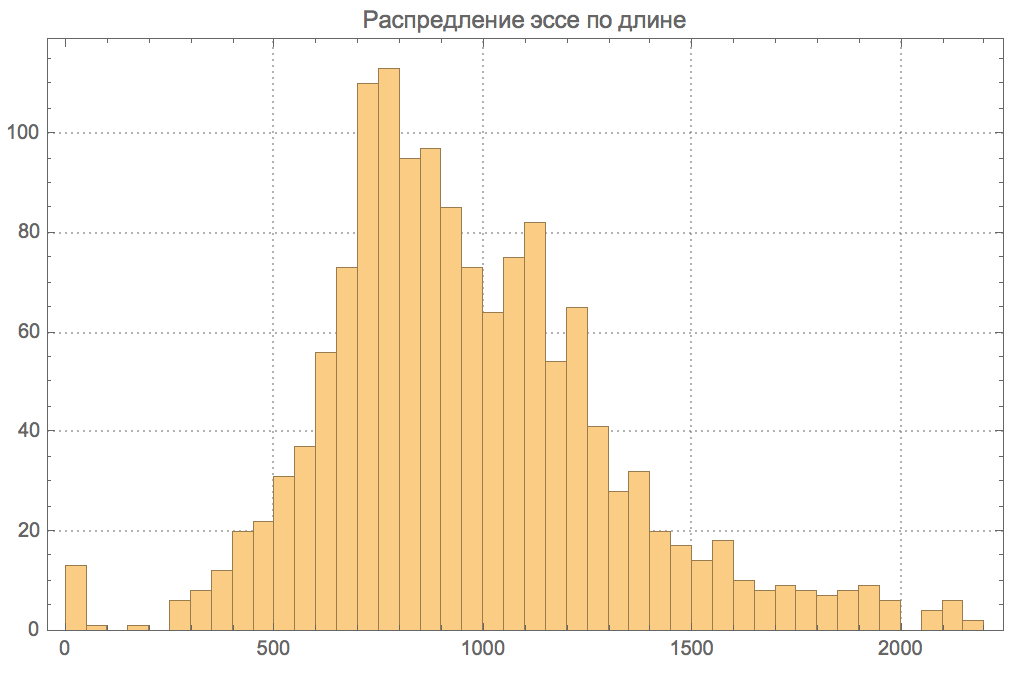Essay tool: from idea to monetization

As a team, Skyeng started the service of written assignments in the English language with the help of optimization, algorithmization and typing errors in the price list.
Any modern school of English focuses on the communicative method. For example, we in Skyeng clearly track how much time a teacher says in a lesson, how many students and try to keep the bar - at least 50% of the time for a student to speak. At the same time, nobody has canceled written communication skills - many of us write business letters in English, create presentations and pitches. How to express your thoughts correctly, get adequate feedback and improve your texts in English? Having set such a task, we realized that there is no product on the online learning market that allows us to teach writing skills. And we decided to do it.

Creating such a tool was a pure experiment - we wanted to complement our ecosystem of learning English, which includes an interactive platform, trains vocabulary and pronunciation. At first, we naively assumed that the introduction of the Essay tool would not greatly affect the school's economy and did not plan to monetize it. However, a couple of months of free trial work showed that we are losing excessively large money: the service turned out to be popular, and its support at a sufficiently high quality level is very expensive.
We attacked a rake, stuffed cones, optimized work, developed algorithms, calculated a commercial model, looked for the right people, and now, finally, we can say that we have a product called “Essay”. Pupils pay for checking written assignments, teachers select topics for their essays, and the attractiveness of the main product of our school has increased. It is time to tell what and why we did to launch this service.
Teachers: a new approach and algorithmization
The task seemed simple at first. We knew that many of our teachers themselves give written homework to students and test them outside working hours. It would seem: we will entrust it to everyone and we will pay for it: everyone is happy! Did not work.
First, it turned out that some of our teachers have difficulty verifying written assignments. Our educational methodology is based on communication. We select teachers with communicative skills, who can quickly find a common language with students: they are not only methodologists, but also psychologists. And for the qualitative verification of written work, professionals are needed who specialize in precisely this type of task.
Secondly, our teachers do not like routine work. They like to communicate with the student, understand his difficulties, solve them, share the joy from success. Our teachers are not at all interested in working with impersonal text, even for money. It's just not their strong point. Even those of our employees who voluntarily gave students written work did not want to do it on a contract basis.
This problem could be handled by universalization of the teaching staff, but:
- this would reduce the quality of our main product;
- we would lose the money spent on the selection of the collective of classroom teachers we already have.
After consulting with the methodologists, we realized that it is necessary to create a department of teachers who are checking essays and working at full time. But how to calculate their work? We made notes from the screen of a methodologist who was analyzing students' essays; we spread the whole process in seconds. Based on these records, we ordered special plug-ins in Google Docs, which allow several times to reduce the number of clicks in the menu when pointing out an error. We’ve created a bookmark system for Chrome that contains links to academic articles on common errors. This made it possible to radically reduce the number of clicks that eat up time and distract attention from the text.

Another optimization tool is a rating calculator. After checking the essay, the teacher only needs to fill out five fields on the Google tablet to get a set of points for content, grammar, vocabulary and spelling, as well as a final grade. The principle of scoring varies by level, so we have five such calculators.

Finally, it took time for psychological acceleration and a normal working rhythm. Now, essay methodologists are testing up to 18 works per day (400 per month).
Pupils: cheap, fun and with the right choice
All students of the school want to get a quick visible result, spending a minimum of money and effort on it. Written homework seems complicated and boring. In addition, not all students seek to master the written language: some are verbally enough, for example, to be able to usefully go to foreign events and conferences.
At the same time, we know that written assignments are important for successful learning and for carrying out tasks related to business correspondence, making presentations, etc. Proper distribution of the curriculum between oral communication and writing an essay, in fact, allows you to get a visible result faster and cheaper than just oral communication. However, writing written works is not always the most exciting part of the educational process. How to be?
We had to make writing assignments cheap, useful and at the same time quite attractive. Price reduction is achieved through maximum automation. Along with the mentioned plug-ins in Google Docs and useful links databases, we also actively promote Grammarly product among students - a plugin for Chrome that tracks grammar and punctuation errors in the text entry process. Grammarly acts as an automatic methodologist: he not only corrects mistakes, but also explains them. This is a great self-learning tool with fast feedback. We do not force to use this plugin, however it helps both students and us, saving our staff time and reducing the cost of the service.

Grammarly corrects the most obvious mistakes at the stage of writing an essay.
To increase interest in the essay, we used several solutions. We developed an extensive database of topics (one or two for each of the 285 General English lessons), trying to make them as clingy as possible (“flame generators”). Topics are determined by a set of "throwing" questions. A teacher who knows the range of interests of his student has the opportunity to choose the topics on which he wants to speak. The student also has the opportunity to choose what fascinates him. In this case, payment is charged only when the student decides to send an essay for review; if there is no need for the services of our methodologist, he can write as many essays as he pleases for free.
 We used elements of interactive gaming techniques in the essay. The student is encouraged to use in the composition of a certain amount of a pre-prepared set of words, phrases and phrases. As soon as something from this set appears in the text, the corresponding line in the set is deactivated. For many students, this turns into a game: try to use the entire set within one single story.
We used elements of interactive gaming techniques in the essay. The student is encouraged to use in the composition of a certain amount of a pre-prepared set of words, phrases and phrases. As soon as something from this set appears in the text, the corresponding line in the set is deactivated. For many students, this turns into a game: try to use the entire set within one single story.
After verification, the student receives two texts: a fully corrected essay (“clean copy”) and an essay with flagged errors, comments by the methodologist and links to additional information. In the future, when the “Essay” tool will be introduced into the course of business English, the “Pureists” will receive additional use - for example, in the form of ready-made summaries.

School: minimum price for maximum quality
The school needed to develop a payment model that would allow us to fully cover our expenses, and at the same time did not scare students away.
To solve this problem, we once again carefully measured the time of work of the methodologist with student essays. It takes from 10 to 50 minutes to check the works - this is too wide a spread to determine the universal cost of the service. The regularity was discovered: the compositions of the initial levels (elementary / beginner), as a rule, are short (one paragraph) and contain many errors. Essay levels of pre-intermediate and intermediate, on average, five times more, but less mistakes in them. High levels (starting from upper intermediate) require a completely different methodological approach to verification (not only grammar, but also the style of the text, its sociocultural aspect are considered). Accordingly, teachers spend different times on checking work: on average, 20 minutes at the elementary level, 30-35 minutes at the pre / intermediate level and 50 minutes at the upper intermediate level. Highlighting the three main groups of essays in General English, we set different prices for them in proportion to the time difference of the methodologist’s work.
We also had to introduce the concept of the maximum size of an essay — if it is exceeded, the student is offered the option to reduce the text or pay more. Initially, this size was determined empirically by the Methodists, but it turned out to be too small, and we began to receive letters from disgruntled students. To adjust the marginal size of the essay, we looked at the statistics of all the written works, saw a characteristic “hill” on the graph and set a limit after it so that more than 90% of students fall into the “comfort zone”.

Then we experimentally launched a paid system. New students were randomly divided into three groups, the first of which was offered at the project payback level, the second with a standard markup of about 10-20%, and the third - more than 40% (checking the “prestige effect” of the product). If, as a result, we saw a serious advantage in the first group, we would have to reconsider the whole business model of the tool, since such an essay cost negatively affects the school's profit. Fortunately, the level of interest in the first two price groups turned out to be almost the same (the discrepancy is less than 10%) despite the difference in price. This meant that we found the right balance of price / quality, and you can safely launch the product into commercial operation.
In addition, we have developed package proposals that allow the student to immediately buy a dozen essay checks at a significant discount. It is curious that when launching these offers we were sealed up, accidentally making the price a quarter lower than planned; Practice has shown that this error was very successful. It stimulates well to buy package sentences: packages of 10 works are sold three times better than the minimum packages of two essays and one and a half times better than packages of five essays. At the same time, we do not lose money, because pupils do not strive to use the entire package that they got at a discount by any means.

Payment introduction (red area) has not yet had a significant impact on the popularity of the service.
Result and perspective
We launched a unique online learning product. By itself, it does not generate substantial profits, but it makes the comprehensive school offer much more interesting. We were convinced that careful optimization and automation of the educational process make it possible to implement ideas that seemed so impossible or too expensive. During the work of the tool in the test and commercial mode, students were asked about 8,800 essays, in about 6,200 cases they started to do the work and sent about 3,800 essays for review.
In the future, the Essay tool will help us to expand new products, in particular, to complete its introduction into the program of business English and the preparation program for international exams, which are impossible without written assignments. We are planning to offer “Essay” to clients who are not students of the school, who want to check their level or simply correct errors in the text. We are actively expanding the library of practically useful topics: for example, business letter, resume, professional fields. Well, our most expensive current project - “Work on the bugs” - which should automatically form tasks based on the analysis of student errors, is also based on experience and decisions related to the “Essay” tool.
')
Source: https://habr.com/ru/post/282115/
All Articles